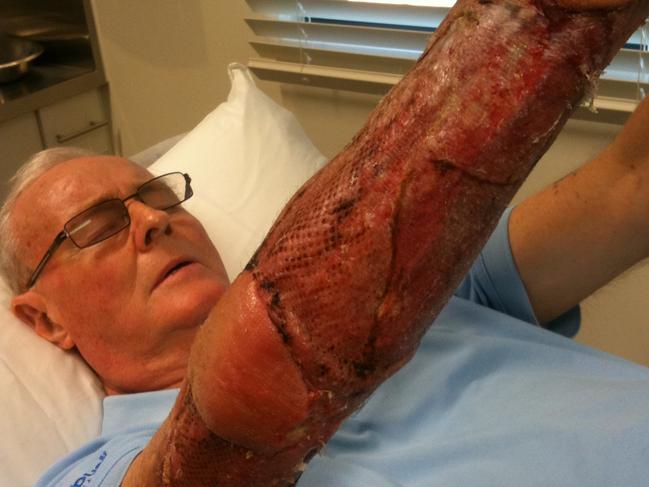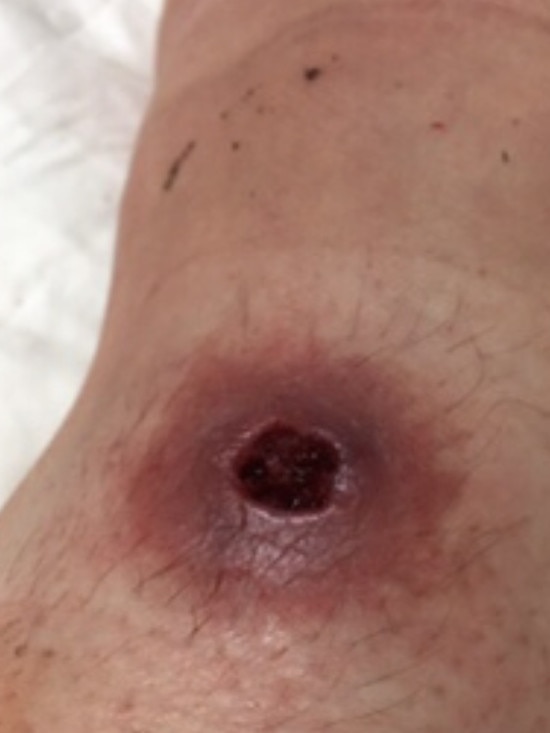Research underway into flesh-eating bug, Buruli Ulcer, plaguing Mornington Peninsula
The battle to stop a flesh-eating bug spreading in Melbourne’s southeast is stepping up, with researchers now recruiting a citizen army. Here’s how you can get involved.

South East
Don't miss out on the headlines from South East . Followed categories will be added to My News.
A citizen army is being recruited in the battle against Victoria’s debilitating flesh-eating ulcer.
Experts believe the humble mosquito is a big player in the spread of the disease, which causes deep and weeping ulcers.
And they’re calling for public volunteers to set up mozzie traps on their properties.
RELATED
BURULI ULCER, BAIRNSDALE ULCER CASES SOAR ACROSS PENINSULA
BURULI ULCER VICTIM SHARES SHOCKING STORY
CALLS FOR URGENT ACTION AS CASES OF BURULI ULCER SOAR
Scientists know that possums are also carriers, but they don’t know why the infection attacks in some regions and not others.
The main hotspots are in the city’s southeast, Mornington Peninsula and the Bairnsdale area.
Mornington Peninsula Mayor David Gill has rallied residents to become involved in the fight against the rapid spread of the ulcer.
The traps release a small amount of carbon dioxide gas from the ice inside a portable cooler.
The mosquitoes think the gas is coming from the breath of a person or animal that it wants to bite.
As the mosquitoes investigate, a small fan draws them down a funnel at the top of the trap and into a bag.
Field officers working on the Beating Buruli project will collect bags of mosquitoes and send it to a laboratory for testing.

Cases of the Buruli ulcer have skyrocketed, with 275 infections across the state last year, compared to fewer than 50 in 2010 — with the Mornington Peninsula the hardest hit.
The Leader reported in December that State Government data showed reports of the bug were spiralling across the region, with 111 cases recorded in the shire and 27 in Frankston in the past financial year.
High risk areas include Rye, Sorrento, Blairgowrie and Tootgarook, while Frankston and Seaford have been deemed moderate risk.
Victorian Department of Health officers are working with researchers from organisations including Mornington Peninsula Shire Council to understand how the disease — commonly known as the Bairnsdale Ulcer — is spread and to find ways to reduce infections.
Experts have been working on the Peninsula collecting soil samples, faecal samples from possums, laying mosquito traps and doing field surveys of residential properties.
MORE PENINSULA NEWS
COUNCIL USES DRONES TO MONITOR DAREDEVILS AT MT MARTHA
SUPER STORE PROJECT SLAMMED FOR LACKING TRANSPARENCY
Victoria’s acting chief health officer, Dr Brett Sutton, said they hoped the research would identify interventions which would actively disrupt disease transmission for the first time.
“This will lead to the development of evidence-based policies and practices that can help stop the spread of the disease,” he said.
Olympic medallist Neil Hewitt, of Sorrento, previously told the Leader he had pleaded with a surgeon to amputate his right arm due to horrific pain caused by the flesh eating bug.
Mr Hewitt was left with extensive scaring on his arm and limited movement in his right fingers.
You don’t need to have been diagnosed with a Buruli ulcer to fill in the questionnaire or set up mozzie traps.
MORE NEWS
